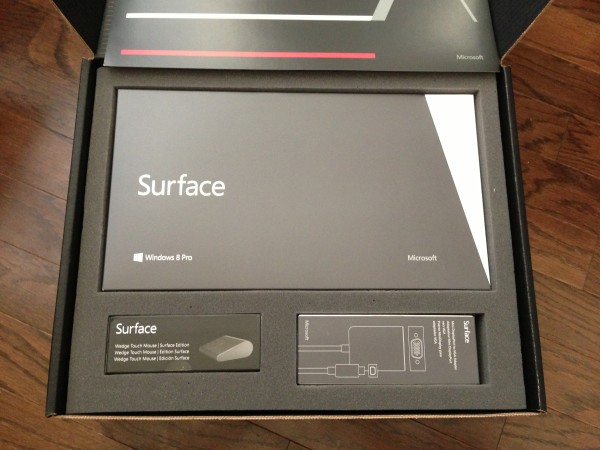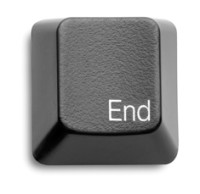
30 Days with Surface Pro: Day 30
Well, it’s Day 30 of 30 Days with Surface Pro. That means it’s time to reflect on the overall experience, and summarize my thoughts on the Microsoft tablet. The goal is to decide whether or not the Surface Pro is capable of replacing both a traditional desktop / laptop PC, and a tablet at the same time.
Let’s take a look at how it performs in each role separately, and then conclude with the ultimate question–should you buy one?
Surface Pro as PC
The Surface Pro has the same Intel Core i5 guts as many traditional laptop and desktop PCs. It uses an SSD rather than a standard hard drive, and it lacks a DVD drive, so the overall hardware is most similar to Windows ultrabooks. But, asking whether or not the Surface Pro can replace your PC is a very different question than asking whether a Linux system can replace your Windows system, or whether an iPad can replace your PC, because the Surface Pro is literally a PC running Windows.
When I use my Dell XPS M1330 laptop in my office, I don’t use it as a laptop. Same with my MacBook Air for that matter. I connect it to an external monitor, full size keyboard, mouse or touchpad, external storage, my printer, webcam, etc. The laptop itself sits in a drawer, and nobody who walks in to my office would have any real way of knowing whether I was using a desktop or laptop PC. It’s a PC, and that’s all that really matters.
The same logic holds true for the Surface Pro. When I connect it in my office, and tuck it away inside a desk drawer, there is functionally no difference between the Microsoft tablet, my Dell laptop, or a full size desktop PC. It would really (really, really) help if the Surface Pro had a docking station to simplify the process of connecting it to all of the external peripherals, and to provide a wired gigabit Ethernet connection, but the bottom line is that the Surface Pro works as well as any comparably equipped Windows PC.
Surface Pro as tablet
The Surface Pro struggles a bit on the tablet side of the equation. Judging the book by its cover alone, the Surface Pro is, in fact, a tablet.
The physical form notwithstanding, though, the Surface Pro is handicapped by its PC internals. By tablet standards, the Surface Pro is thick. With the Type cover attached, the Surface Pro is as thick as the fattest part of the MacBook Air. The Surface Pro is also heavier than most tablets, and it has poor battery life compared with pure tablet devices.
That said, the Surface Pro is still a tablet. I can easily take it with me when I leave the office. I can read a Kindle book in bed, use it as a second-screen device when watching movies or playing games on the Xbox 360 in my living room, or work with it using the digitizer pen while sitting in a meeting. It may not be the best tablet on the market if we’re considering pure tablets, but it can perform all of the same functions as the rest of its tablet rivals.
Best of both worlds
That’s a silly question really. It is both. Period. There’s no valid argument against that fact.
It very much is a Windows 8 PC, and it happens to be in the form of a tablet. Although the Surface Pro suffers by comparison with other tablets in some areas, it can do things none of them can. It can run all of my Windows software–including the full Microsoft Office suite. It can connect to a Windows network domain, and be managed through Active Directory and Group Policy. The reason it can do all of those things is because it’s both a Windows 8 PC and a tablet at the same time.
It’s not the best tablet, and it’s not the best PC, but if you want or need one device to fill both roles the Surface Pro may very well be the best device available.
Should you buy a Surface Pro?
That is the real question, isn’t it? It’s easy to appreciate the Surface Pro when Microsoft loans you one, but it’s a different story when you have to spend $900 or more of your own money to get one.
For the same $900–the price of the base 64GB Surface Pro with no Type or Touch cover–I can buy a laptop with similar hardware (Intel Core i5, 4GB of RAM, etc.), and a separate tablet. I could actually save money by purchasing a less expensive Kindle Fire HD 8.9 tablet, or a smaller tablet like a Google Nexus or iPad Mini, and I’d be able to spend more on a more powerful laptop. Even if I wanted to keep it all in the Windows family, I could buy a laptop, and a separate Surface RT tablet and still spend about the same money as the Surface Pro.
Let’s be honest, too. If I were buying a Surface Pro I’d actually be spending $1,200-plus because I would get the 128GB Surface Pro ($1000), and the Type cover ($130), and the display port to HDMI adapter ($40), and a 32GB microSD card ($50). You can buy a really nice laptop for $1,200.
The Surface Pro is not the only Windows 8 Pro tablet option, either. I can get most of the same advantages of a full Windows 8 experience in a tablet form factor with a Samsung Series 7 Slate, or a Dell Latitude 10, or many other available options. The Dell Latitude 10 is significantly less powerful than the Surface Pro. It’s about half the computer in terms of processing and storage–with an Intel Atom processor, 2GB of RAM, and 32GB SSD–and it costs about half as much–starting at only $500. For $850, though, you can bump the storage to 64GB, and add a digitizer pen, removable battery, AT&T cellular connectivity, and a docking station.
As it stands now, it’s hard for me to say. The Surface Pro is an exceptionally well-engineered device. It feels solid, and sturdy. Most of the complaints and issues I’ve had have been more with Windows 8 than with the Surface Pro itself. I am not looking forward to boxing up the Surface Pro and shipping it back to Microsoft. That said, I have no plans to rush out and spend $1,200, or even $900 to buy one.
There’s a lot of potential there. I’m hopeful that Microsoft’s stronger relationship with Dell may result in some sort of hybrid Windows 8 Pro tablet that incorporates the strengths of both. If the “Surface Pro 2” incorporates a docking station and cellular connectivity it will be a much stronger device than the current version.
The bottom line is this. If you already have a desktop or laptop PC, you probably won’t want to buy a Surface Pro as your add-on tablet device. You can choose from a multitude of other tablets–including the Surface RT–for significantly less money. When it comes to a purchasing decision, the Surface Pro is more PC than tablet.
For businesses or consumers who are in the market for a new PC, though, the Surface Pro is worthy of consideration. Businesses in particular should be looking very seriously at Windows 8 Pro tablets like the Surface Pro because they fill the Windows PC, and mobile device roles in one device that can be connected to and managed from the existing Windows network domain.

